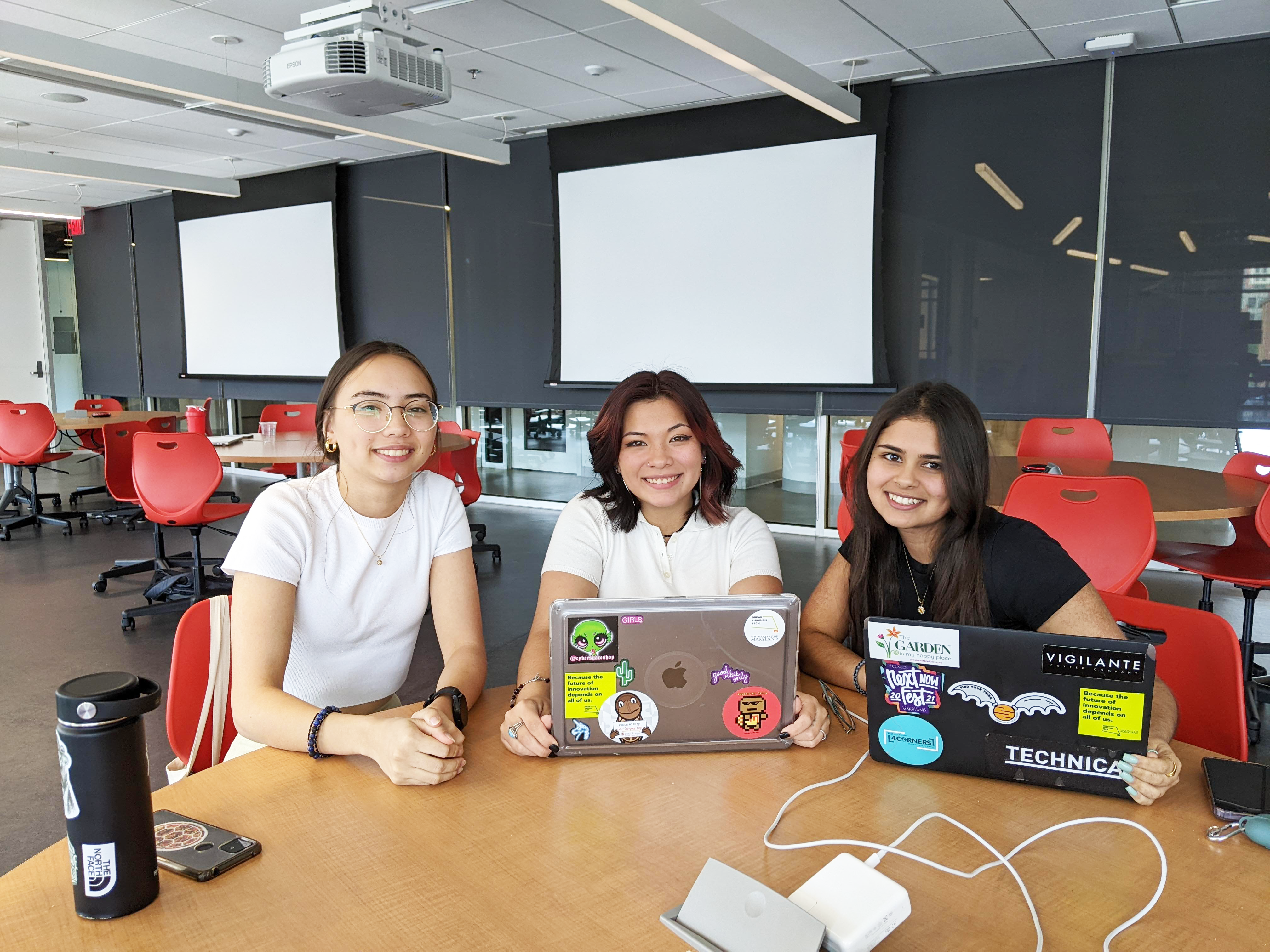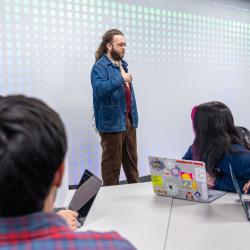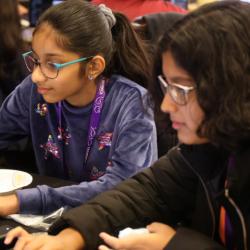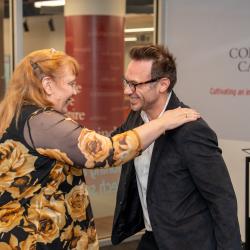Undergrads Take Community-building Solutions to the Next Level
92 Students Explored User Experience Design in Break Through Tech’s Summer Guild
When it comes to solving a problem, it can be easy to jump straight to the solution and forget about brainstorming and forming ideas. In August 2022, 92 students learned about creative idea development and expanded their digital and design thinking skills during the second annual Break Through Tech Summer Guild program at the University of Maryland.

A national initiative with a site at UMD, Break Through Tech aims to propel more students who identify as women and nonbinary into tech education and, ultimately, tech careers. Guild participants gain hands-on experience in designing and coding real-world applications.
“I actually first learned about Guild on Instagram, and after doing a bit of research, I saw that my personal values aligned with the mission of Break Through Tech,” said computer science major Briti Nebhnani. “I was excited that Guild would help me get a jump-start in an avenue of tech that I hadn’t explored before.”
With three weeklong summer sessions (two virtual and one in person), incoming freshmen and rising sophomores at UMD got paid to learn about design thinking, programming using Thunkable software, notable women in tech, educational and career opportunities, and more.
This year’s Guild theme was ‘building social ties’ with a focus on the UMD campus community. The students divided into teams and spent about 15 hours developing creative solutions to community-building challenges. The Guild students were mentored by 40 volunteers from Accenture, Capital One, Dropbox, Google, Mastercard, Microsoft, Salesforce and Verizon who helped guide their ideation and creation processes throughout the week.
“Before they learn anything else in Guild, the students get a lot of experience with understanding the context and background of the problem they are going to solve—this year, we focused on building community,” said Elias Gonzalez (B.S. ’18, computer science; M.Ed. ’18, curriculum and instruction), Break Through Tech curriculum innovation lead. “We hear stakeholder perspectives, then list out pain points, then move on to solution ideation and modeling.”
Nebhnani and her teammates focused on how effective time management could not only help UMD students get their work done but also help them find community among their peers. They decided to create an app that syncs students’ workdays with a time management technique called pomodoros—breaking study into focused, 25-minute intervals with five-minute breaks in between. They called their app PomoSync.
“Learning about user experience and user design helped me to really think about how people use technology and the hindrances that occur when things aren't designed properly—all things we put into practice when designing PomoSync,” Nebhnani said.
She also learned how to collaborate effectively to develop a proof of concept, which was facilitated in part by the group’s industry mentor, Shilpa Roy (B.S. ’20, computer science; M.S. ’21, computer science).
“I’m really proud of what my group accomplished this week,” said Roy, who’s now a software engineer at Mastercard. “I just watched them do all this work and really grow up over the course of a week. They have really big ideas, this group, and it was so rewarding to see how it all came out.”
From the industry mentorship to the career panel to the resume workshop and more, what Gonzalez enjoys most about instructing Guild is seeing so many people coming together to support undergraduates.
“Hopefully, we’re helping students see that computing is for them and that it doesn’t matter which department or major they’re in, we really care about what’s best going to serve them, their interests and their studies in the future,” Gonzalez said.
Nebhnani is coming away from Summer Guild with a new interest in user experience design and front-end app development. And she wasn’t the only one—85% of the 92 Guild participants said they felt confident or very confident about applying user experience design in a post-program survey.
“Guild really gave me more confidence to pursue things I would never do,” she said. “I used to never think I would get involved in the front-end development or design side of technology, but now I have really cultivated a passion for it.”







